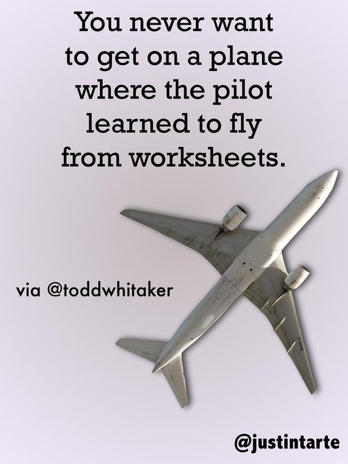
I left our first session with George Couros feeling energized and inspired. While I have to admit that most of the technologies he shared were not new to me (except for bit.do which I have already used to help our school secretaries create a short link and QR code to our school supplies list for next year), it was refreshing to hear George and other teachers share some of the ways that they have made learning innovative and creative in their own classrooms.
As a high school math teacher, I try to find ways of replacing worksheets and “drill & kill” lessons with real life scenarios. One of my mentors describes the best math lessons as ones that are active, interactive, thoughtful, meaningful, personal, and practical. Keeping this in mind, I decided to teach Grade 12 Calculus using a storybook (The Life of Fred by Stan Schmidt) instead of a traditional calculus textbook. Rather than learning calculus the traditional (university) way of:
- Definition
- Theorem
- Proof
- Corollary
- Definition
- Lemma
- Theorem
- Proof
- Definition
- …
- Final Exam
with such a lack of excitement that even a rock would be bored, my students learn about functions, limits, derivatives, related rates, maximums/minimums, etc. through the adventures of a boy who discovers the topics of calculus naturally during his own life experiences.
When I chose The Life of Fred before the start of the semester, I thought to myself “This is perfect! No more worksheets, no more lectures, no more definitions… lots of creativity, lots of understanding, lots of thinking outside of the box, and lots of real life applications!” It seemed perfect, and I was sure that my students would appreciate such a creative approach to teaching and learning calculus. And then it happened… one week into the course, one of my students said what no student has ever said before “Can we please do notes and worksheets tomorrow?” Others in the class agreed. It turns out that after 14 years of learning mathematics and pre-calculus from worksheets and textbooks, learning calculus from a story of life experiences is very hard.
I went home that night with a tough decision to make. I could take the easy route and start to give traditional lectures (using my old notes from when I took CALC 1500 at the University of Manitoba), assign worksheets and make my students happy, or we could tough out the innovative approach a bit longer and see what happened.
I stuck with The Life of Fred. While lectures and worksheets would have been easier, I had no good reason for going back to them other than that was the way that calculus has always been taught. Two months later, the largest benefit of creativity in a mathematics classroom is very clear – there is a large increase in student understanding. Not only can my students calculate the first and second derivatives of a function, they also know the meaning of a derivative and when it would be useful to calculate one.
The world doesn’t need human calculators. Technology has given us the power to compute calculations in a fraction of a second that would take a person minutes (or hours) to complete. Instead, what we need are people who have a deep understanding of mathematical concepts and know how to use them when solving a problem.
Thomas Locke
Churchill High School
Cluster 1971